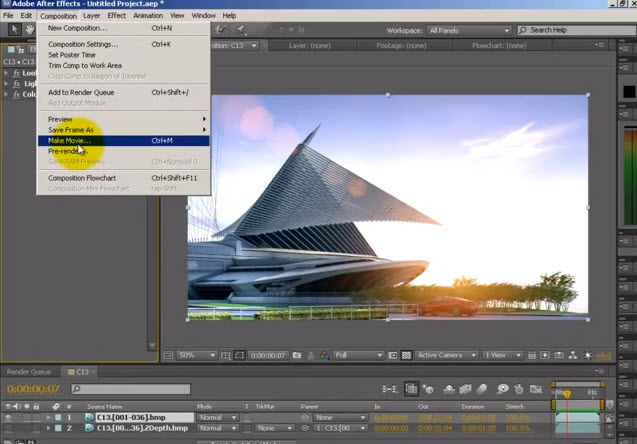

This method is better suited for walk-through animations. Transitions between scene are still noticable but smoother.

Smooth SU Scenes - The camera will progress along the same SketchUp path, however the corners of the path will be rounded out.But if you are animating geometry from a single viewpoint, this would be the best method to choose. This method is characterized by sharp corners that may be unsuitable for a walk-through. Sketchup Scenes - The camera will progress along the exactsame path that SketchUp follows when it shows the animation in the SketchUp view.Selecting from the Animation Type sets which method to use. Animation Type - Twilight Render V2 provides 3 different ways of moving the camera through your animation.Let's look at the different settings available. Under the dropdown you will find all the controls necessary for setting up your animation, including the length of time to run, the number of frames per second (FPS) and where to save the finished images. You can see this in the Animation Editor under the Advanceddrop down (right in the middle of the editor's Toolbar). The first is the Animation Advanced Settings. There is the addition, however, of three (3) specific controls that you will need to use for setting up your animation. Almost all the settings are exactly same and used the same way.

You can find a tutorial on all these under the Basics of Rendering Tutorial here. From it you can set the Render Preset, the Image Size, various Camera properties, and Layer visibility. The animation editor is very similar to the standard Render Editor. You can find the Animation Editor under the Extensionmenu (SU 2015) or the Pluginsmenu (SU 2014 and earlier), by clicking Twilight V2, then Animation Editor. Once you have your animation ready in SketchUp and it's time to begin rendering, you start with the Twilight Render Animation Editor.
#Sketchup make animation how to
If you are new to SketchUp animations, we strongly recommend you take some time to learn how to create animations in SketchUp before attempting to render them! There are many tutorials and guides available on the internet to learn how to create a SketchUp animation. With the addition of third-party plugins, it's also possible to animate geometry and even perform physical simulations!Īnimations in SketchUp are scene-based where each scene page represents a stopping point and your animation is a transition between points. SketchUp provides a great deal of features in support of animations, including changing environment lighting, layer visibility, and camera settings.
#Sketchup make animation pro
Select the one that says “hidden line.Tutorial 7 in the Basics of Twilight Render V2 Series Both Twilight Render V2 Hobby and Pro support rendering Animations. Default styles with a green stopwatch indicate that they are best for working because they load faster. Select a default style by clicking on the “select” tab and choosing “default styles” from the dropdown menu. Open the “styles” tab in the default tray. A working scene will give you a more generic scene that will allow you to continue working without all of the added detail that can slow down your work flow.ĭefault Style. When you find a view you are happy with, right click on the second scene in the default tray and select “update scene.” Double click on the first scene to return to it. You can change the eye height in the bottom right corner to lift or lower the camera.

Use the walk tool to move inside your model until you find a view you want to use. This time select “walk” from the camera drop down menu. Click on the “+” below the scenes tab to add another scene from your current view.


 0 kommentar(er)
0 kommentar(er)
